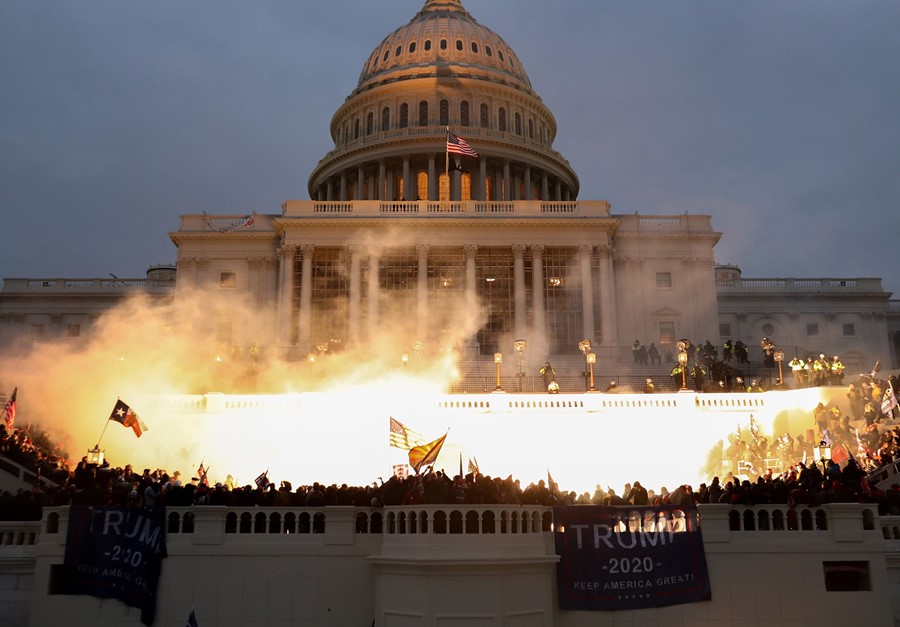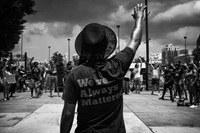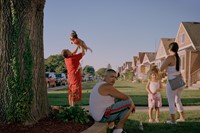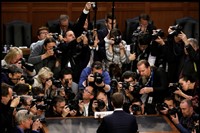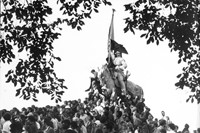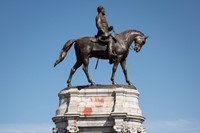A new exhibition at the Saatchi Gallery brings together over 120 works that speak of a deeply troubled nation – from the 1965 civil rights riot in Selma to the January 6 attack in Washington
In 1969, Magnum Photos commissioned 18 photographers to tell the truth about America. The resulting catalogue, America in Crisis, was a visual narrative of systemic injustice, endemic racism, polemical politics, and brutality. Now, 50 years on, a new exhibition at Saatchi Gallery in London revisits this truth and the reality of its persistence. The exhibition, which takes its title from the Magnum catalogue, features photographs from the original project alongside work of contemporary photographers that reveal the mechanics of injustice still operating at the heart of a deeply troubled nation.
In doing so, a dialogue surfaces between past and contemporary narratives of social unrest and resistance in the United States, at times so identical one could easily be mistaken for the other. “It was clear in May 2020 that the framework of the original 1969 project, with its consideration of the American Dream versus reality on the ground … provided a fitting and still relevant framework to examine what was happening,” Sophie Wright, who co-curated the exhibition, tells AnOther.
Each section of the exhibition corresponds to a section of the 1969 catalogue and opens with quotes from the original text that remain resonant. One haunting section, Streak of Violence, begins: “Was the violence ‘structural’ – the result of an intersecting and overlapping complex of institutional practices: the tradition of armed police; the prevalence of mayhem in the mass media; the refusal of Congress to pass tough gun-control legislation despite the menace of one hundred million privately owned handguns, shotguns and rifles? Finally, was the society by nature violent?”
1969 or 2022? The distinction blurs. With historical photos by Elliott Erwitt of a funereal Jackie Kennedy and Paul Fusco of the famous funeral train for Robert Kennedy, Wright, in collaboration with two other curators – Gregory Harris from Atlanta’s High Museum of Art, and academic Tara Pixley – chose to portray the effects of gun violence on a societal, but also on a personal level. These images are juxtaposed with works of contemporary photographers, such as Stacy Kranitz and Zora Murff whose work highlights those same effects in present-day America. The latter’s photo of the back of the head of a boy in a red hoodie, recalls the irreparable loss of Trayvon Martin and countless others, and is particularly poignant.
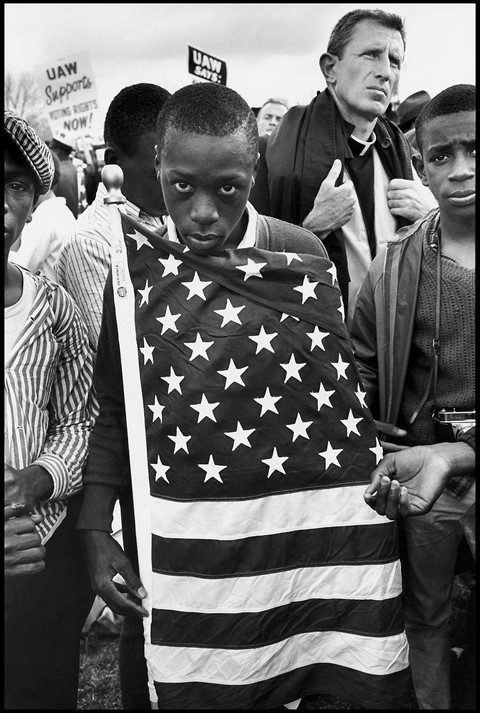
“There is something magical that happens in a project like this,” says Wright, “with all its layers of narrative.” This is the function of this exhibit: to speak across time – from the 1965 civil rights riot in Selma, AL to the Black Lives Matter and Standing Rock protests and finally to the 6 January 2021 Capitol attack – as a call for racial justice and social equity that has yet to be answered.
Striking images, such as Bruce Davidson’s photo of a protestor with a flag at Selma, implore the viewer for understanding before leading them to the present-day reality of insurrection as captured by contemporary photographers Leah Mills and Balazs Gardi, where they are faced with the result of apathy. This exhibition is, at its heart, a call to action. It is a portrait of human crisis designed, like the very essence of photography, to reflect back to us a defamiliarised perspective on our own lives.
America in Crisis is at the Saatchi Gallery from 21 January to 3 April 2022.
